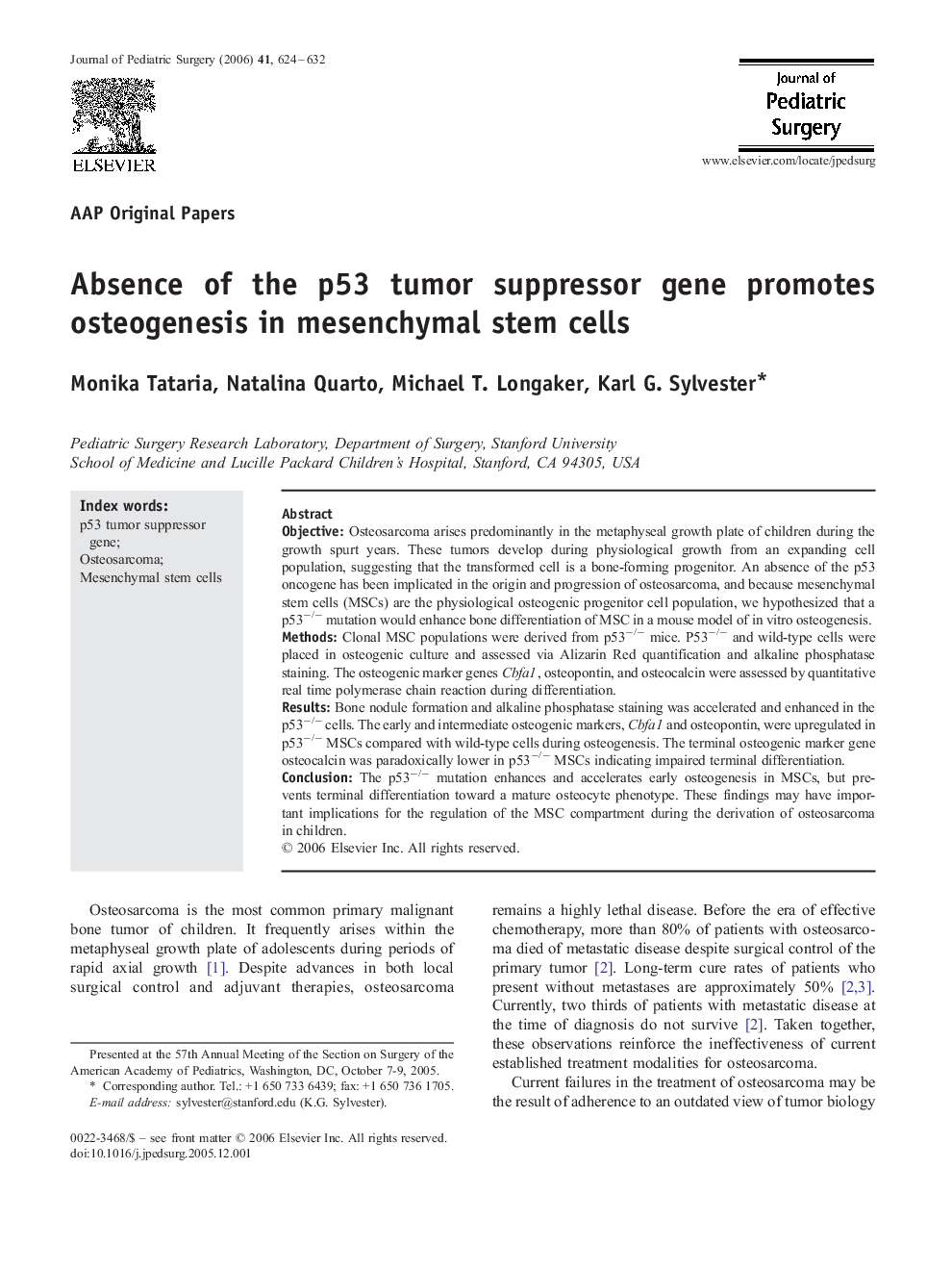| Article ID | Journal | Published Year | Pages | File Type |
|---|---|---|---|---|
| 4160587 | Journal of Pediatric Surgery | 2006 | 9 Pages |
ObjectiveOsteosarcoma arises predominantly in the metaphyseal growth plate of children during the growth spurt years. These tumors develop during physiological growth from an expanding cell population, suggesting that the transformed cell is a bone-forming progenitor. An absence of the p53 oncogene has been implicated in the origin and progression of osteosarcoma, and because mesenchymal stem cells (MSCs) are the physiological osteogenic progenitor cell population, we hypothesized that a p53−/− mutation would enhance bone differentiation of MSC in a mouse model of in vitro osteogenesis.MethodsClonal MSC populations were derived from p53−/− mice. P53−/− and wild-type cells were placed in osteogenic culture and assessed via Alizarin Red quantification and alkaline phosphatase staining. The osteogenic marker genes Cbfa1, osteopontin, and osteocalcin were assessed by quantitative real time polymerase chain reaction during differentiation.ResultsBone nodule formation and alkaline phosphatase staining was accelerated and enhanced in the p53−/− cells. The early and intermediate osteogenic markers, Cbfa1 and osteopontin, were upregulated in p53−/− MSCs compared with wild-type cells during osteogenesis. The terminal osteogenic marker gene osteocalcin was paradoxically lower in p53−/− MSCs indicating impaired terminal differentiation.ConclusionThe p53−/− mutation enhances and accelerates early osteogenesis in MSCs, but prevents terminal differentiation toward a mature osteocyte phenotype. These findings may have important implications for the regulation of the MSC compartment during the derivation of osteosarcoma in children.
